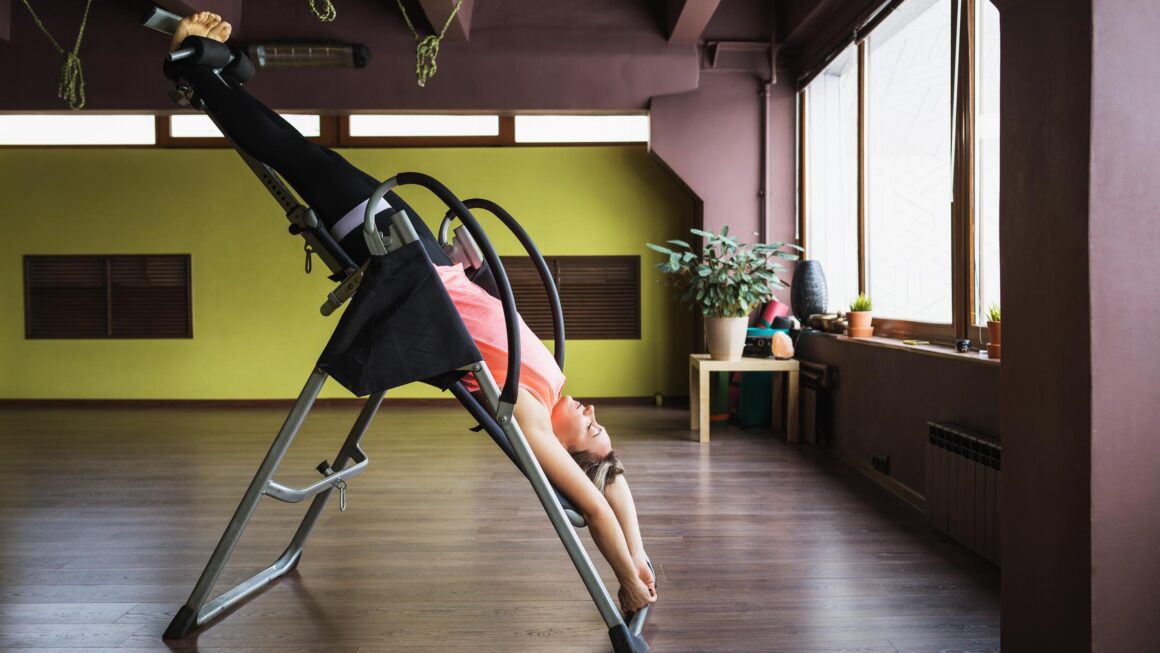Inversion tables have become increasingly popular over the years as a non-invasive approach to managing back pain. Some users report significant relief and improved mobility. Others experience no noticeable benefits — and a few even report worsening symptoms after use. So how can we reconcile these mixed results and determine whether inversion therapy is safe and appropriate for a given individual?
How Inversion Tables Work
Inversion tables operate by placing the user in a reclined or inverted position, allowing gravity to gently apply traction along the spine. This decompression can help temporarily reduce pressure on intervertebral discs, increase intervertebral spacing, and possibly relieve nerve root compression or muscle tension. For the right person, this can lead to real improvements.
But that’s the key: for the right person.
When Inversion Becomes a Risk
Think of inversion therapy like a food — say, broccoli. For most people, it’s beneficial. But for someone with a sensitivity, allergy, or a particular condition like irritable bowel syndrome, it could cause harm. Inversion tables work the same way. If there is underlying spinal instability, inversion may not just be ineffective — it could be harmful.
Spinal instability can result from several sources:
- Hypermobile spinal segments, often caused by chronic fixation of adjacent joints
- Surgical fusion, which shifts biomechanical stress to surrounding segments
- Congenital defects or previous trauma affecting spinal alignment and function
- Ligamentous or capsular laxity due to acute or chronic injury
- Connective tissue disorders such as Ehlers-Danlos Syndrome
In such cases, applying traction through inversion can overstress unstable segments, potentially leading to worsening joint dysfunction, nerve irritation, or even permanent damage over time.
Neuromusculoskeletal Conditions: A Word of Caution
For patients with chronic neuromusculoskeletal disorders — including degenerative disc disease, multiple sclerosis, Parkinson’s disease, or persistent neuropathic pain — inversion therapy should be approached with heightened caution. The gravitational forces involved can interfere with the delicate neurodynamics of an already compromised system. Any such condition should be thoroughly evaluated by a licensed physician or musculoskeletal specialist before inversion is even considered.
Why Individual Assessment Is Essential
We often hear disclaimers in health podcasts and television interviews: “This is not medical advice; consult with a licensed provider.” These aren’t just formalities. In situations like this, such disclaimers underscore a critical truth: what works well for one person could be damaging to another.
Without a comprehensive understanding of your spinal biomechanics, history of injury, and overall neuromuscular status, it’s impossible to know whether inversion therapy is safe in your particular case. A proper physical examination by an experienced chiropractor, physical therapist, or spine specialist is essential before attempting any form of spinal traction — especially one as forceful as inversion.
The Bottom Line
Inversion tables can offer real relief for the right individual. But when misused, they can cause more harm than good — particularly in the presence of spinal instability, previous surgeries, or chronic neuromuscular conditions. What’s needed is not guesswork or trial-and-error, but a tailored clinical decision based on your unique structure, history, and symptoms.
If you are considering inversion therapy for back pain, the safest and most responsible step is to undergo a thorough evaluation by a licensed healthcare provider familiar with spinal biomechanics and functional movement.
[/cmsmasters_text][/cmsmasters_column][/cmsmasters_row]


Leave a Reply